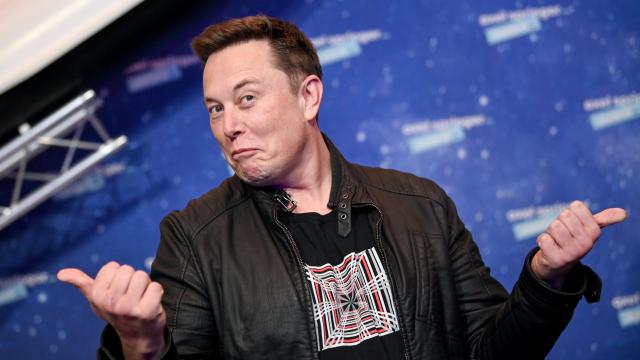It’s a strange time of late in Tesla land. That’s particularly true for an increasing number of drivers who’ve had to endure their vehicles seemingly violating local laws, and now, a surge of others who claim their Teslas are suddenly slamming on the breaks for no reason.
That latter issue was the focal point of a recent Washington Post report which found a spike of over 100 complaints filed to the National Highway Traffic Safety Administration in the past three months from Tesla owners claiming their vehicles suddenly and unexpectedly slammed on the brakes. Though complaints of this so-called “phantom braking,” aren’t entirely new for Tesla, they appear to be occurring at an unprecedented pace. Specifically, owner complaints of phantom braking rose to 107 complaints in the past three months compared to a meager 34 complaints the 22 months prior.
“These events are hair raising for me and passengers, let alone for a driver behind me,” one Tesla owner wrote in a complaint. Another owner claimed their wife had to ask them to stop using Teslas’ Autopilot and cruise control features over fears the unexpected breaking could harm their unborn child.
In a statement to Gizmodo, an NHTSA spokesperson said it was, “aware of complaints received about forward collision avoidance and is reviewing them through our risk-based evaluation process.” The spokesperson said that the review process entails discussing the incidents with Tesla and reviewing additional data sources like Early Warning Reporting data. “If the data show that a risk may exist, NHTSA will act immediately,” the spokesperson said. Gizmodo tried to reach out to Tesla but never heard back.
Unintended braking incidents, like those described in the Post report, were a key component to an October recall that affected 11,704 Tesla vehicles. In that case, a software glitch in FSD 10.3 led to an “inadvertent activation of the automatic emergency braking system,” an NHTSA spokesperson told Gizmodo at the time. Tesla quickly rolled out an over-the-air update to address the issue, yet, since that recall reports of phantom or unintended braking are higher than ever. In fact, the single highest reported cases of phantom breaking analysed by the Post occurred just one month after the recall. So what gives?
While it’s possible some of the surges in complaints could potentially be explained away by a heightened sense of caution from drivers following the recall, the Post report points to another potential culprit: Tesla’s decision to ditch radar in favour of computer vision. Tesla made that change last summer when it announced new Model 3 and Model Y vehicles built in North America would opt to use the company’s camera and sensor-based “Tesla Vision” system.
That decision sparked a heated debate in the autonomous vehicle world with some safety experts warning radar’s removal could degrade driver assistance features in poor weather, impact emergency braking, and make it more difficult for Tesla to avoid collisions in some cases.
“It makes no sense whatsoever technologically — only a way of reducing the cost of components,” University of California, Berkeley University Research Engineer Steven Shladove told Reuters at the time. Meanwhile, on the flip side, recently released videos from some Tesla owners using FSD on public roads show vehicles repeatedly failing to engage the brakes, sometimes in the face of large trucks or pedestrians.
Here’s a typical drive on Tesla FSD Beta, and why it’s the opposite of useful. It’s most certainly not even close to being “safer than a human”, by any factor.
22-minute drive, 4.5 miles, and WAY too many interventions. pic.twitter.com/oKmkRZ3Tgh
— Taylor Ogan (@TaylorOgan) February 1, 2022
Experts in the recent Post report similarly warned Tesla’s decision to go camera-only makes it impossible for it to cross-check against multiple types of sensors, tactics other AV companies like Waymo deploy to set thresholds for deciding when an object is nearby or when it’s detecting a false alarm.
The reported surge in phantom braking incidents occurs the same week Tesla issued a recall of 53,822 of its U.S. vehicles equipped with FSD concerns its driving profiles were encouraging vehicles to roll through intersections. Though Tesla has told the NHTSA it will issue an over-the-air update to remove the rolling stop feature, CEO Elon Musk offered up a bizarre commentary on Twitter, criticising the Associated Press and other media outlets for their accurate coverage of the recall.
He’s actually a lobbyist, not a journalist. There are many who pose as the latter while behaving like the former. No integrity.
Indeed, there were no safety issues. The car simply slowed to ~2 mph & continued forward if clear view with no cars or pedestrians.
— Elon Musk (@elonmusk) February 1, 2022
“He’s [the AP reporter] actually a lobbyist, not a journalist,” Musk wrote in his tweet. “There are many who pose as the latter while behaving like the former.” Musk went on to claim, despite the recall, there weren’t actually ever any safety issues. “The car simply slowed to ~2 mph & continued forward if clear view with no cars or pedestrians,” Musk wrote. However, as others have pointed out in his thread, that very same description of rolling through an intersection, even at low speeds, is illegal in most states.
If you’re confused, so are we.
